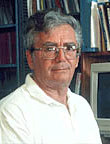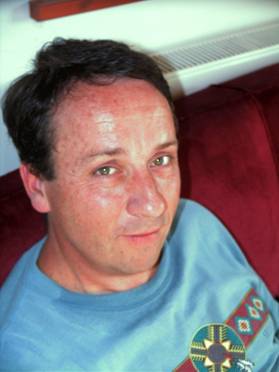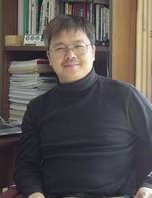
| |
|
| |
The executive committee is the core group of senior scientific personnel, known as the Principle Investigator (PI) and Co-Principle Investigators (Co-PIs) on campus who make the bulk of the planning and implementation decisions, in yearly guidance of the Advisory Board Committee and in compliance of NSF guidelines. | |
 |
Susannah Scott, Director and Principle Investigator Professor of Chemical Engineering and Chemistry & Biochemistry UC Santa Barbara Susannah Scott has been an active co-director of the PIRE-ECCI since year two of Phase-I. She moves to the position of director with a strong foundation in active leadership and a keen sense of direction and focus. Her research group conducts both fundamental and applied research in surface chemistry and catalysis. Their aim is to understand the interactions and transformations of molecules at the gas-solid interface by creating highly uniform active sites. They apply techniques from organometallic and coordination chemistry, surface science, spectroscopy, kinetics, mechanistic analysis and modeling to investigate, design and reengineer heterogeneous catalysts. The group consists of chemical engineering and chemistry students working closely together to solve problems at the interface of chemistry and reaction engineering. |
 |
Horia Metiu, Co-PI Professor of Chemistry UC Santa Barbara Horia Metiu served as an active principle investigator throughout the first five years of PIRE Phase I, along with being the seminar series coordinating faculty member, inviting dozens of high-profile researchers to give talks at UCSB to share their forefront research. His research involves time-dependent statistical mechanics with applications to reaction rates, hydrogen diffusion on surfaces, desorption rate; catalysis by metal nanoparticles on oxide supports; simulations of fuel-cell membranes. |
 |
Peter Ford, Co-PI Professor of Chemistry UC Santa Barbara Peter Ford became an active participant in Phase I of PIRE-ECCI, sending two of his advisees to China for extended research visits and being a visible collaborator to the program on campus. His research is concerned with three long-term interests: catalysis, the photochemistry and photophysics of transition metal complexes, and the bioinorganic chemistry of nitric oxide complexes. The common theme is an interest in reaction mechanisms and in applications of quantitative spectroscopic techniques to investigate these systems. |
 |
Michael J. Gordon, Co-PI Professor of Chemical Engineering UC Santa Barbara Mike Gordon was a frequent participant in PIRE-ECCI events, including the last workshop of PIRE-I in Dalian in the summer of 2009, and as the advisor of a fellowship winner for the 2009-2010 academic year. His research interests are to explore, understand, and exploit the unique physicochemical properties and dynamics of nanoscale systems found in material science, microelectronics, catalysis, and biology. His approach focuses on the development and application of "hybrid" scanning probe microscopy (SPM) techniques for chemical, optical, electrical, and mechanical interrogation of single nanostructures and surfaces to learn how size, confinement, organization, and surface chemistry affect behavior. The majority of his work is "hands-on" experimental science involving a combination of SPM (scanning tunneling, atomic force, and near-field optical microscopy - STM, AFM, SNOM), laser spectroscopy, and nanofabrication (litho, etching/deposition, nanoparticle synthesis/organization, and surface functionalization). |
 |
Alec Wodtke, Co-PI Professor of Chemistry UC Santa Barbara Alec Wodtke was the brains behind the PIRE-ECCI project. He wrote the original grant and served as director for most of Phase-I, until his promotion to Alexander von Humboldt professorship at the University of Goettingen in Germany in April 2010. His enthusiasm for the project, and science in general, was a source of inspiration for all participants. He kept many of his group members heavily involved in the project, both on campus and on XRVs. He will continue to be a force of gravitas for the PIRE in its second Phase. His research involves photochemical production of cyclic-N3, vibrational promotion of electron emission and the scattering of laser-prepared molecules from metal surfaces. |

|
Xueming Yang, Chinese Program Coordinator
Professor and Group Leader State Key Laboratory of Molecular Reaction Dynamics Dalian Institute of Chemical Physics Ph.D. UC Santa Barbara 1991 Prof. Yang's research involves theoretical and calculative dynamics, Stereo-dynamics, dynamics of photo-dissociation and reactive scattering by means of crossed molecular beams, dynamics of femto second laser, ultra-fast dynamics in gas phase, laser application in the field of biology and catalysis, new short-wavelength chemical laser system and the stimulated Raman scattering study of chemical oxygen-iodine laser. |